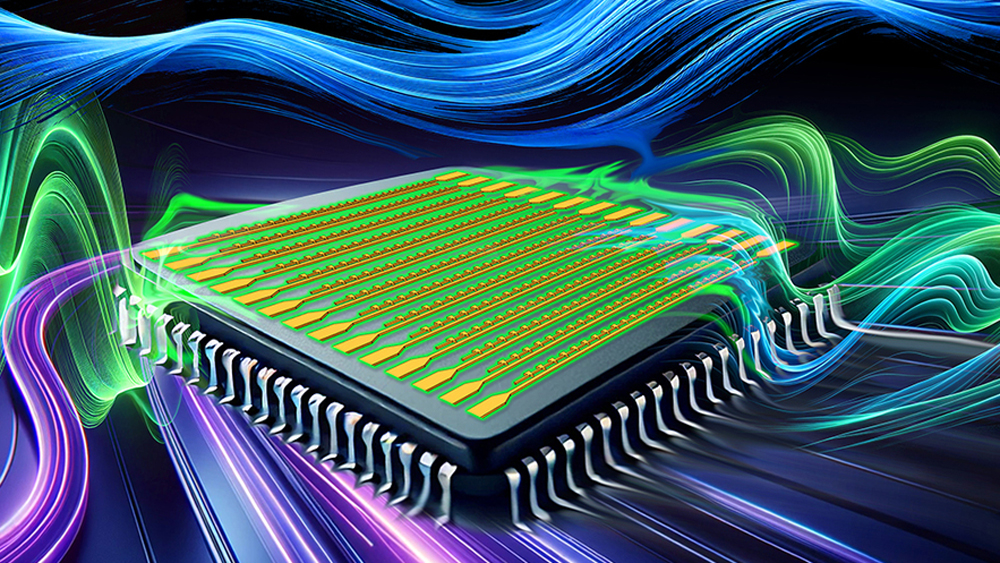The demonstration of a lightwave-electronic mixer at petahertz-scale frequencies is a first step toward making communication technology faster and advances research toward developing new, miniaturized lightwave electronic circuitry capable of handling optical signals directly at the nanoscale. Credit: Sampson Wilcox/Research Laboratory of Electronics
Imagine how a phone call works. Your voice is converted into electronic signals, shifted up to higher frequencies, transmitted over long distances, and then shifted back down so it can be heard clearly on the other end. The process enabling this shifting of signal frequencies is called frequency mixing, and it’s essential for communication technologies like radio and Wi-Fi. Frequency mixers are vital components in many electronic devices and typically operate using frequencies that oscillate billions (GHz, gigahertz) to trillions (THz, terahertz) of times per second.
|
ADVERTISEMENT |
Now imagine a frequency mixer that works at a quadrillion (PHz, petahertz) times per second—up to a million times faster. This frequency range corresponds to the oscillations of the electric and magnetic fields that make up light waves. Petahertz-frequency mixers would allow us to shift signals up to optical frequencies and then back down to more conventional electronic frequencies, enabling the transmission and processing of vastly larger amounts of information at many-times-higher speeds. This leap in speed isn’t just about doing things faster; it’s about enabling entirely new capabilities.
…

Add new comment